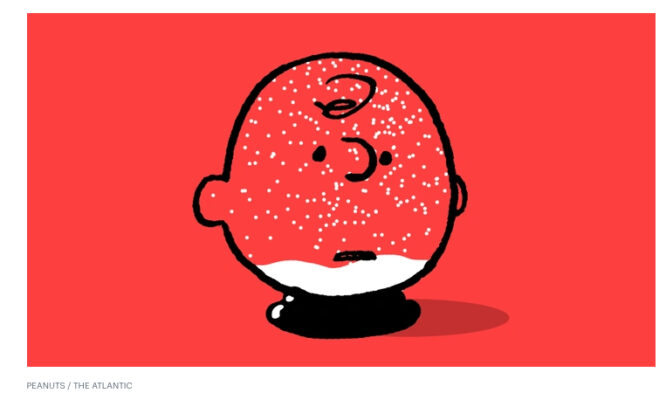
Caitlin Flanagan on “A Charlie Brown Christmas”

I have always been impressed by the journalist Caitlin Flanagan, but her recent memoir and “think piece” on the remarkable staying power of a TV special from 1965 featuring the cast of the comic strip Peanuts is one of the best such things I have ever read. Just like the Charlie Brown Christmas special, it’s an instant classic.
After the jump, I quote generously from the intro. But I leave off quoting before I get to the best part, which is her explanation of how that instantly-accessible jazz music ended up in the mix. So, please click through to read the whole article on the Atlantic website.
But before that, I want to note that Ms. Flanagan has been battling Stage IV cancer with preternatural courage. You may wish to read I Thought Stage IV Cancer was Bad Enough… (then came a pandemic, during the Presidency of Donald Trump).
Clickez ici, SVP!
Charlie Brown’s Inside Job
What gives the 1965 Peanuts its staying power?
By Caitlin Flanagan
“Lights, please.”
For half a century, it’s been one of the most significant phrases in American Christianity. A prelude to something sacred in an unlikely place: the Gospel of Luke, King James translation, as recited by Linus van Pelt in A Charlie Brown Christmas.
My parents were atheists; I knew almost nothing about Christianity as a child, although I got the lay of the land when I was sent to Catholic school in sixth grade. Before that, my parents—especially my mother—actively worked to keep me and my sister free from religion, Christianity in particular.
But we had our gods. Santa Claus and the Easter Bunny reigned over us, with great kindness and generosity, and if we came, eventually, to a crisis of faith, we dealt with it privately. My sister and I understood that our feelings about Christmas were very important to our parents. The brief—transmitted in the silent language of the family—was to be happy, because our parents had had terrible childhoods, and instead of working out their pasts in psychoanalysis or “involvement,” they threw themselves into these perfect Christmases. It was the most wonderful, extremely tense time of the year.
My earliest grasp of how Christianity worked came from the Charlie Brown Christmas special—funny, cool, beloved by all. The special was first broadcast in 1965, when Charles Schulz’s Peanuts cartoon strip was in the initial flush of its stupendous popularity (the characters had been on the cover of Time magazine that spring), syndicated in hundreds of American newspapers. Millions of children knew and loved it, so half of the work was already done: We knew that Lucy was crabby and Sally was romantic and Schroeder was single-minded.
In that time, television was not an endless range of possibilities, every watcher a Prospero, conjuring up visions on command. In those days you had three networks, and if one of them was broadcasting a show for children at night, you can bet that the news had been shouted down school stairwells and across playgrounds, and you can bet that all of us were in position, sitting on family-room carpets and living-room couches, breathing as one, soaking it all in.
(Please click here to read the whole thing—and please share this with all your friends. jm)
# # #


